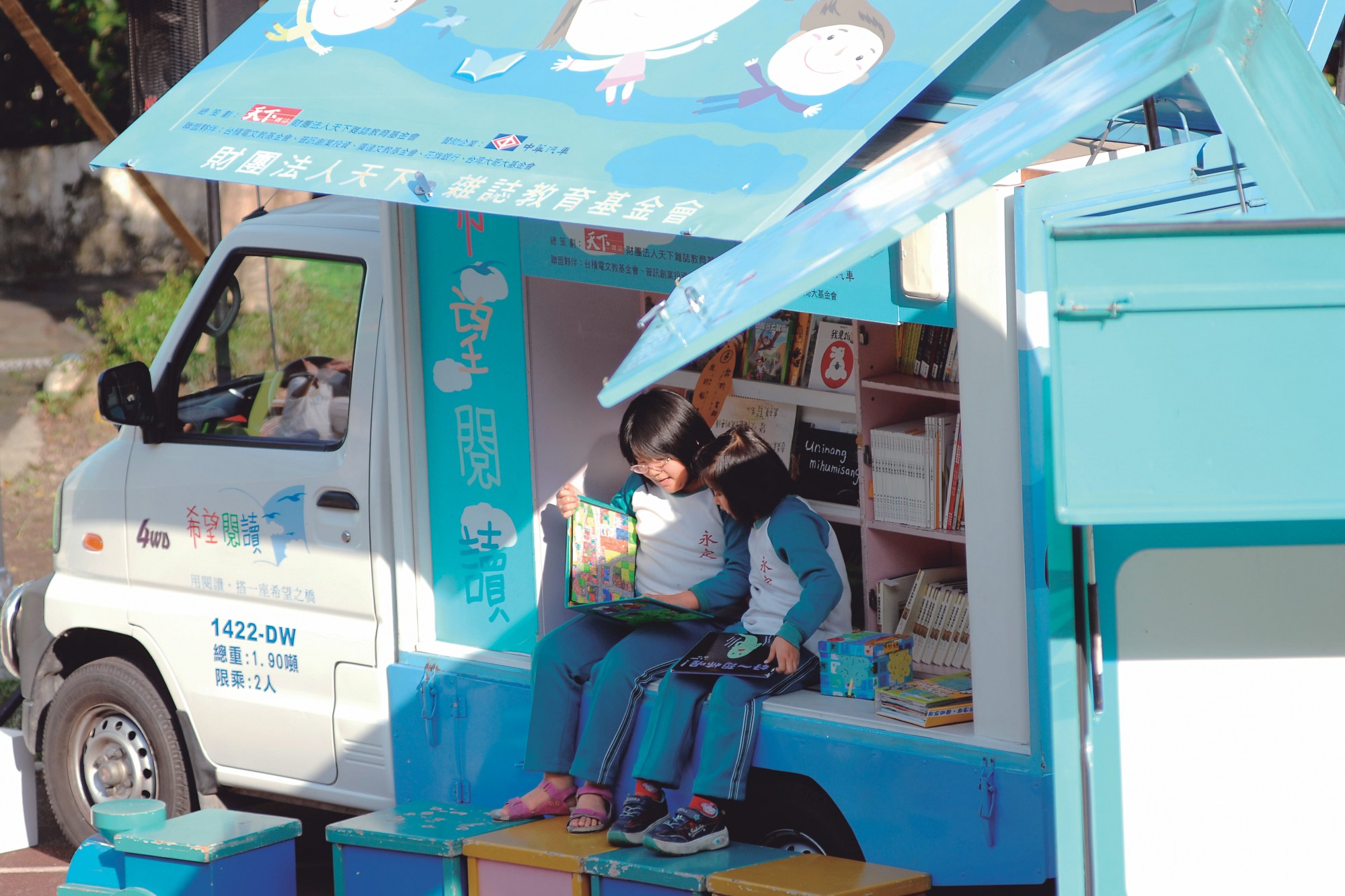APSAA 亞太永續行動獎(Asia-Pacific Sustainability Action Awards )-Sustainability Action Award SDG4:Gold
CommonWealth Magazine Education Foundation 財團法人天下雜誌教育基金會

Hope Reading Program: Helping Underprivileged Children in Remote Areas Improve Their Basic Literacy Skills
Taiwan is a small nation with big gaps in development. There are around 110,000 children living in remote areas where the learning environment is still relatively unfavorable. And many of these children are from indigenous, immigrant, low-income, single-parent or skipped-generation families. Every year the Hope Reading Program, launched in 2004, helps more than 16,000 children in 200 remote schools improve their basic literacy skills, catch up in learning, and develop the knowledge and skills necessary for the future so that they can overcome the social limitation and inequality and lift themselves out of poverty. For the past 19 consecutive years, the Hope Reading Program has motivated and influenced hundreds of thousands of students, teachers, principals and parents. It has also prompted the government to pay attention to remote schools, spending nearly NT$ 300 million in rural education and introducing policies such as “Focus 300” and “Vigor 800” to improve rural children's reading skills. The Hope Reading Program provides: 1. Quality reading resources for schools: every year we carefully select and send books, reading passports and rewards for free to remote schools. More than 370,000 books, 300,000 reading passports and 500,000 rewards have been given away to encourage children to read more and develop good reading habits. We also have four“Bookmobiles” touring around remote areas each semester to offer a more relaxed reading environment for children. The Bookmobiles have traveled over 200,000 kilometers. That is 50 round trips on U.S. Route 66! Except that the paths traveled are mostly difficult ones, including country trails and mountain roads. 2. Top-notch training and courses for teachers: every year we organize training programs and workshops for teachers and principals to keep up with the latest trends and methods of helping children learn to read. More than 1,000 seeded teachers have been trained and more than 100,000 educators benefited. 3. Versatile performing platforms for children: literacy skills include listening, speaking, reading, and writing. That is why we hold the “Little Writers Contest” and “The Middle School Research Project Competition” every year. We provide multiple platforms for children in remote areas to show their works and their expression skills and bolster their self-confidence. 4. Diversified channels to promote reading education: we strive to provide diversified channels and methods to promote reading education, such as… a. Modeled Sustained Silent Reading (MSSR): we promote the MSSR by encouraging parents to lead by example, spending ten minutes every morning reading together with their children to develop reading habits. b. R-STEAM: we have created a readingbased approach for STEAM (Science, Technology, Engineering, Art and Mathematics) education. c. SDGs Reading: In 2021, we have compiled the world's first SDG Book Club specializing in Traditional Chinese children‘s books to help our children understand the meaning of SDGs through storybooks. 5. Volunteer storytellers for remote and rural areas: we have to date recruited and trained more than 1,000 volunteers from universities and companies as storytellers to visit remote schools and read with children to provide them new stimulus and incentives for learning. 6. Powerful incentives to encourage local and community participation: we have designed the “Storytelling Moms & Dads Reward Program”to encourage parents to read stories for children at schools. We also advocate school collaboration among different areas to strengthen local bonds and promote reading together. In November 2021, the website of "SDGs 兒童永續書房@天下"(SDGs Book Club@天下) planned by the Commonwealth Magazine Education Foundation was officially launched. The “SDGs 兒童永續書房@天下”(SDGs Book Club@天下) website lists hundreds of traditional Chinese version children‘s books and picture books corresponding to each of the 17 SDGs indicators. On the website, after clicking on each book, the introduction of the book, the reason why the committee recommended the book, and extended thinking questions are attached to encourage parents, teachers and children to understand the SDGs and start dialogues and explorations. Since the website was launched, the number of page views has exceeded 560,000. By May 2023, the website has 30,000 pageviews every month. The Commonwealth Magazine Education Foundation also uses this book list to hold online curation and physical workshops, and promotes the integration of sustainable reading into school curricula, so that more teachers can use the book list to teach children about SDGs. We believe, the more teachers share how they lead students to read SDGs books, the more kids will flourish by the SDGs seeds in the near future.

